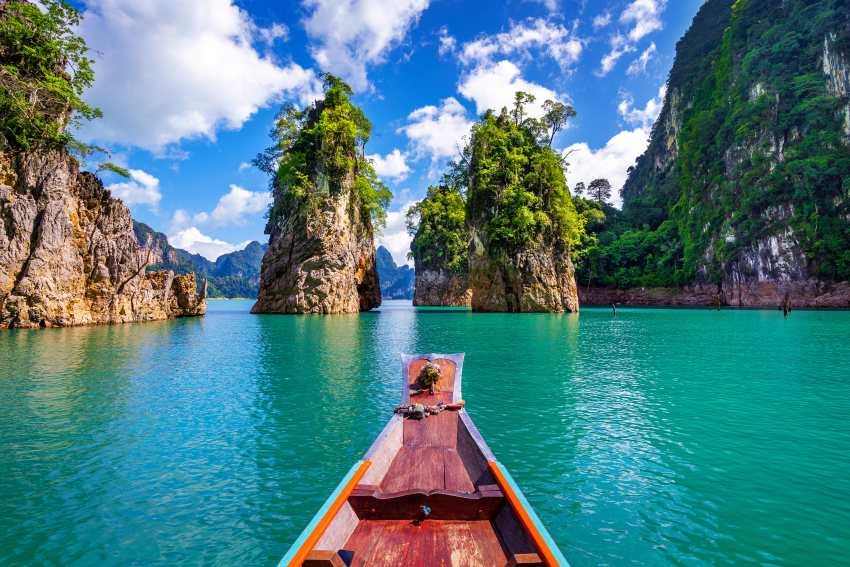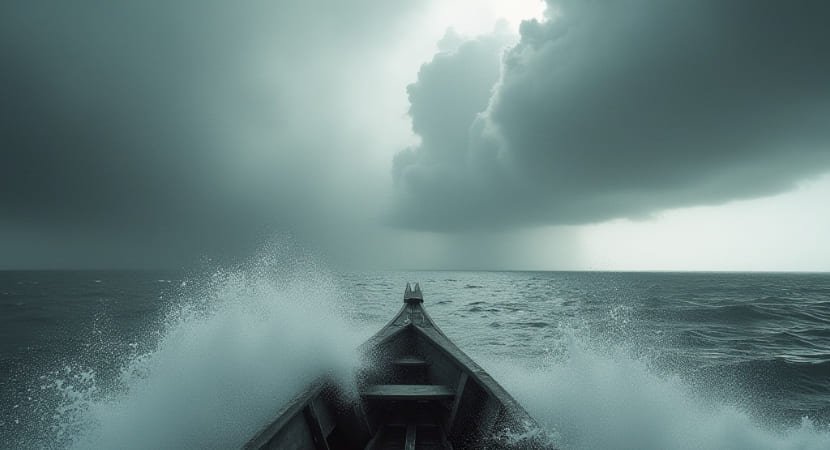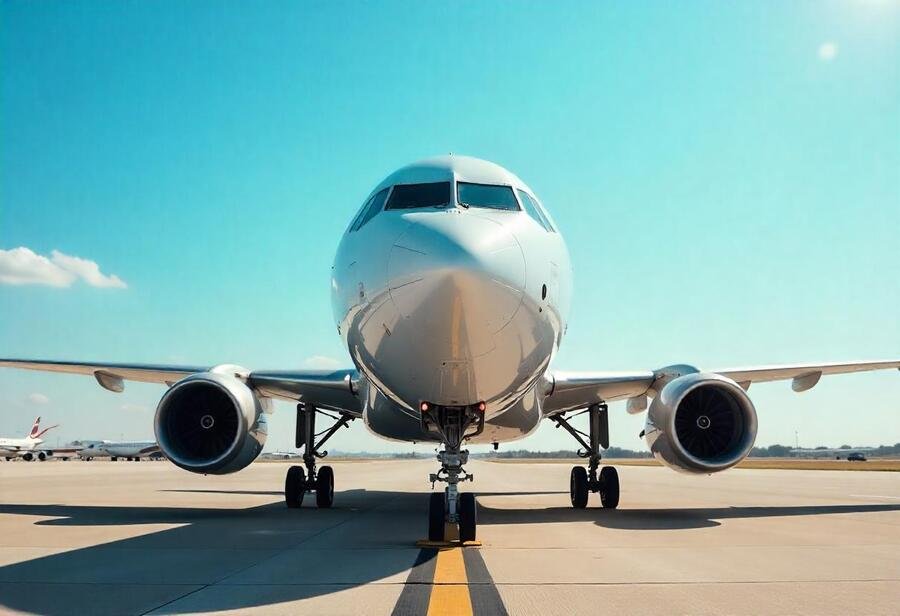Asia Travel Pulse
Tourist Safety at Risk: Boat Capsize Incidents in Thailand and Vietnam Highlight Urgent Need for Enhanced Security Measures

Sunday, July 20, 2025
On 20 July 2025, an accident happened at the Ratchaprapha Dam in Surat Thani, Thailand, where at least one person died, and indicated the necessity to take action to improve tourists’ safety with boat tours. A tourist boat carrying foreigners sank; one Thai tour guide was killed, but the tourists sustained no injuries. It’s a tragedy that didn’t have to happen, and it’s been a problem throughout the year, from a fatal boat capsize in Vietnam to fears about how safe tourists are while taking to the water for country excursions.
A Fatal Incident at Ratchaprapha Dam
The disaster unfolded around 11:28 AM, when the boat, which was carrying 18 individuals, including 16 foreign tourists and two Thai nationals—a tour guide and the boat operator—overturned. The group was navigating the serene waters of the Ratchaprapha Dam, located in the picturesque Khao Sok National Park, an area renowned for its stunning limestone mountains, lush rainforests, and tranquil reservoirs.
Among the 16 tourists, five were from Belgium and 11 were from the Netherlands, all of whom were unhurt in the mishap. Tragically, the tour guide, a 44-year-old woman named Thassawan, was discovered unconscious after inhaling water, and despite being rushed to Ban Ta Khun Hospital for medical treatment, she was later pronounced dead. This marked the first fatality associated with a boat tour at Ratchaprapha Dam in recent years. The authorities immediately launched an investigation into the cause of the capsizing, and a full inquiry into safety practices in the region was initiated. The tour guide, Thassawan, was a licensed professional with a valid permit that was set to expire in November 2029.
Despite the tragic loss of life, the remaining passengers were swiftly rescued and were unharmed. The incident has drawn significant attention, as it occurred in a popular destination, attracting thousands of international tourists annually.
The Broader Picture: A Look at Similar Incidents in Southeast Asia
The Thailand capsizing incident is unfortunately not an isolated case. Recently, a similar tragedy occurred in Vietnam, where a boat capsized in a popular tourist area, leaving casualties in its wake. Though no fatalities were reported, the incident sparked debates about the preparedness of local authorities and tour operators when it comes to the safety of visitors engaging in water-based activities. These recurring accidents have raised alarms about the need for greater oversight, more rigorous safety measures, and enhanced regulations in Southeast Asia’s popular tourist destinations, especially those offering boat tours and other water-based activities.
While both Thailand and Vietnam boast picturesque landscapes and are known for their vast natural beauty, these incidents shine a light on the vulnerabilities tourists face when engaging in certain recreational activities. Whether navigating the iconic limestone cliffs of Phang Nga Bay in Thailand or the lush riverways of Vietnam, safety must be a top priority to ensure that tourists can enjoy the breathtaking beauty of these regions without compromising their well-being.
Tourist Safety Measures: An Urgent Need for Reform
In the aftermath of these incidents, it is evident that both Thailand and Vietnam need to strengthen their tourist safety protocols, particularly for boat tours. While both countries have made significant strides in promoting their tourism industries, safety regulations often fail to keep pace with the rapid rise in visitor numbers and the increasing demand for water-based experiences. It is crucial that the governments of both nations, along with local tourism authorities, implement more comprehensive safety measures to safeguard the well-being of tourists.
Tour operators in both countries must be held accountable for ensuring their vessels are properly maintained and meet international safety standards. This includes routine inspections, appropriate safety gear, and well-trained crew members who are equipped to handle emergency situations. Additionally, tour operators should ensure that their guests are briefed on proper safety procedures and emergency protocols before embarking on any trip.
The Thai government, through the Ministry of Tourism and Sports, has already recognized the importance of enhancing safety measures, particularly in popular destinations like Ratchaprapha Dam. In the wake of the capsizing incident, local authorities in Surat Thani have vowed to review and improve their safety guidelines for boat tours, ensuring that incidents like this do not repeat themselves.
The Role of Tourism Authorities in Ensuring Safety
In the aftermath of the capsizing at Ratchaprapha Dam, the local tourism authorities in Surat Thani have promised to closely investigate the incident and make necessary changes to prevent future accidents. The authorities have stressed that there will be heightened scrutiny on boat tour operators and safety protocols in the region. Further investigations into the technical aspects of the boat, as well as the conduct of the operator and tour guide, are underway.
Both Thailand’s Ministry of Tourism and Sports and Vietnam’s Ministry of Culture, Sports, and Tourism should also consider forming cross-border collaborations to enhance safety regulations across Southeast Asia. By sharing best practices and jointly tackling safety concerns, these nations can improve the overall experience for tourists while minimizing the risks associated with water-based tours.
Preventative Measures: A Global Approach
Tourist safety on water should not only be a regional concern for Southeast Asia but also a global priority. Countries worldwide, especially those with popular natural sites and water attractions, should adopt uniform safety standards that include proper vessel inspections, mandatory safety gear (such as life vests), emergency drills, and well-trained staff to handle emergencies.
International tourism organizations, such as the United Nations World Tourism Organization (UNWTO), can play a pivotal role in supporting countries like Thailand and Vietnam by offering expertise, resources, and guidelines for enhancing safety. Moreover, tourists themselves need to be more informed about the risks associated with water-based activities and take personal responsibility for their own safety, ensuring they follow safety protocols at all times.
Conclusion: Moving Forward with Enhanced Tourist Safety
While the Ratchaprapha Dam and Vietnam incidents illustrate major issues with tourist safety, they also underscore the fact that this may finally be a wake-up call for governments and tourism authorities to better regulate tourist safety. The tragedy highlights the point that while travelling the world’s natural wonders is always a memorable adventure, safety should remain a top concern.
To make every unfortunate case such as this provide recommendations for best practice and work together with Thailand, Vietnam, and similar popular water-based destinations where the natural beauty of these landscapes is shared globally in a safe and responsible manner.
References: Tourism Authority of Thailand (TAT)—Official Website, Vietnam Ministry of Culture, Sports, and Tourism
Asia Travel Pulse
Vietnam Struck By Typhoon Wipha: Travel Now Suffers Disruptions, Read Updates Here

Tuesday, July 22, 2025
Here’s how you can prepare for the effects of Typhoon Wipha as the storm approaches landfall in northern Vietnam, with severe weather expected to impact daily life and travel. The storm, which is set to make landfall on July 22, is predicted to trigger heavy rainfall, powerful winds, and extensive flooding in the local area. Vietnam has already issued distress calls over safety and called its contingencies into service to reduce any harm brought by the typhoon. Local officials are collaborating closely with federal offices to ensure that proper precautions are being taken to safeguard the lives of residents and visitors. Present tourism stays, however, are advised to stay indoors, and check official announcements about changing travel advisories and possible evacuations.
Flights and Waterways Affected
In anticipation of Typhoon Wipha ‘s arrival, several flights have been canceled or rerouted across the country. Vietnam Airlines, Pacific Airlines, and Vietjet have suspended numerous domestic and international flights, particularly those to and from Hai Phong and Quang Ninh provinces. These airports are expected to remain closed until the storm has passed and it is deemed safe to resume operations. Additionally, other major airports in northern Vietnam, including Hanoi’s Noi Bai International Airport, are experiencing delays as the storm intensifies. The cancellations and delays are part of a broader effort to prioritize safety and prevent travelers from being stranded or caught in hazardous conditions. For passengers planning to travel in the coming days, the airlines have been working to accommodate affected customers with rescheduling options and travel credits.
On the waterways, tourist boat services in Ha Long Bay have been temporarily suspended. The local authorities have issued orders for all boats to remain anchored until the storm has passed, as the risk of capsizing or being caught in treacherous conditions is high. This has disrupted not only local tourism but also regional travel, as Ha Long Bay is a major attraction for international visitors. Officials are advising tourists who were scheduled to visit the area to reschedule their plans or seek alternative attractions that are not in the direct path of the storm. Many tourists have already been evacuated from nearby islands, with local authorities ensuring that they are safely relocated to shelters until the storm subsides.
Vietnam Tourism History
Vietnam’s tourism industry has come a long way in recent decades, from its early days of promoting scenic spots to becoming one of the most visited countries in Southeast Asia. In the 1960s, the Vietnamese government began actively promoting tourism through the creation of the country’s first tourism company. This laid the groundwork for the rapid growth of the sector, which gained momentum during the 1990s when Vietnam opened its doors to foreign travelers. Since then, the country has attracted millions of visitors, drawn by its unique blend of natural beauty, cultural richness, and history. Key sites like the ancient town of Hoi An, the bustling streets of Hanoi, and the serene waters of Ha Long Bay have become emblematic of the country’s vibrant tourism scene.
The Vietnamese government has also worked to modernize its tourism infrastructure, improving transportation networks and increasing the availability of modern accommodations in cities and popular tourist destinations. Additionally, Vietnam’s growing reputation for delicious food and welcoming locals has enhanced its appeal as a global tourism hub. The rise in international visitors has also spurred economic growth, with tourism contributing significantly to Vietnam’s GDP. Over the past few decades, Vietnam has hosted numerous international tourism conferences, solidifying its role as a key player in the global tourism market.
Vietnam’s Contribution to Asian Tourism
Vietnam plays an important role in Asian tourism, not only due to its cultural and historical attractions but also because of its growing influence in the regional tourism economy. The country has consistently ranked among the top destinations in Southeast Asia for international tourists, attracting travelers from all over the world. In 2024, Vietnam welcomed nearly 17.6 million international visitors, almost reaching pre-pandemic levels. This surge is attributed to favorable visa policies, government-backed tourism promotions, and its reputation as a safe and hospitable destination for both leisure and business travelers.
Vietnam has also developed a diverse tourism product that appeals to a wide range of travelers. From the bustling cities of Ho Chi Minh City and Hanoi to the pristine beaches of Phu Quoc and the cultural richness of Hue, Vietnam offers something for everyone. This diversity has made Vietnam a key destination within the broader Southeast Asian tourism market. The government has worked hard to position the country as an eco-tourism leader, with growing interest in sustainable travel experiences. As a result, Vietnam has earned recognition in international tourism awards, further solidifying its contribution to the region’s tourism landscape.
Regional Tourism Impact
The impact of Typhoon Wipha extends beyond Vietnam’s borders and is felt across Southeast Asia. In the Philippines, Wipha has already caused significant damage, resulting in deaths and displacing thousands of people. As the storm moves toward northern Vietnam, it threatens to disrupt tourism further in the region, especially in coastal areas that are popular with international travelers. The effects are expected to be felt not only in Vietnam but also in neighboring countries like Thailand and Laos, where travel and weather conditions could be severely impacted by the storm’s path.
In Vietnam itself, the tourism industry is bracing for temporary disruptions, as popular sites and local businesses in affected regions shut down or scale back operations. The storm could also result in a decline in the number of visitors in the coming weeks, as both domestic and international travelers adjust their plans. With the peak tourist season approaching, the timing of the storm poses a serious challenge for the country’s tourism sector. The government has already begun preparing for the long-term recovery of the tourism industry, which will likely include post-storm rebuilding efforts and enhanced preparedness for future natural disasters.
Travel Safety Tips
For travelers in Vietnam during Typhoon Wipha, the government is urging everyone to take the necessary precautions to ensure their safety. The following tips should be followed to minimize risks:
- Stay Informed: Travelers should constantly monitor weather updates from official sources such as the Vietnamese Meteorological Department. These updates will provide real-time information on the storm’s progress and the areas most at risk.
- Secure Belongings: If staying in a coastal or flood-prone area, it’s important to keep personal items and valuables in waterproof containers to prevent water damage.
- Avoid Waterways: The government strongly advises against venturing out into the sea or rivers during the storm, as the waters will be treacherous and could cause severe accidents.
- Emergency Kit: Travelers should prepare an emergency kit that includes essential items such as water, non-perishable food, medications, and a flashlight to ensure they can survive any potential outages.
- Seek Shelter: It’s crucial to stay indoors during the storm, away from windows and doors, to protect against strong winds and flying debris. Many hotels and accommodation providers have reinforced their buildings to offer maximum protection.
Conclusion
Typhoon Wipha threatens northern Vietnam as the storm has brought travel and tourism to a halt in the region. But the government’s swift reaction and the coordination of local authorities will minimize the damage of the storm and protect citizens and tourists alike. While some short-term tremors are to be expected, Vietnam’s long-term tourism recovery efforts will see the industry through this temporary setback. Tourists are advised to follow travel and safety guidelines and remain vigilant of the development of the storm to ensure their safe stay.
Asia Travel Pulse
Hotels Transform into Immersive Art Galleries Across Asia

Monday, July 21, 2025
Luxury hotels across Asia are increasingly turning into vibrant art galleries, providing guests with unique cultural experiences through diverse artistic presentations. From preserving traditional arts recognized by UNESCO to contemporary interpretations of cultural landmarks, these hotels offer art enthusiasts remarkable journeys into local heritage.
Vietnam’s Culture Captured in Oil Paintings
The Anam Mui Ne, opened in early 2023, showcases Vietnam’s vivid cultural tapestry with over 250 exclusive oil paintings created by distinguished Vietnamese artists. Featured prominently within guest rooms, corridors, and common spaces, these artworks illuminate scenes from everyday Vietnamese life. Renowned artist Bui Van Quang, celebrated for capturing local customs and daily routines, and Vu Trong Anh, noted for his abstract landscapes, are among the contributors. Complementing these paintings are traditional pottery artifacts by the Cham people, a practice identified by UNESCO as intangible heritage urgently needing protection.
Artful Exploration in Hong Kong
At The Hari Hong Kong, guests can embark on a curated art journey through the hotel’s extensive art collection and the vibrant Wan Chai art district. The hotel’s “Hari Art Trail,” guided by resident artist Bibek Rai, introduces visitors to eclectic art forms including installations, surreal photography, graphic paintings, and digital artwork, all selected by London-based advisory A Space For Art. Post-tour, guests can explore local creative hotspots, including the Foo Tak Building and the exclusive PHD Group gallery.
Chiang Mai’s Celebrated Umbrella Artistry
Paying homage to Chiang Mai’s iconic Bo Sang Umbrella Village, Meliá Chiang Mai adorns its signature Mai Restaurant and Bar and executive The Level Lounge with elaborate umbrella-themed art. Intricate ceiling installations resembling umbrella frames, along with wall-mounted textile artworks created from traditional Chiang Mai materials, blend local heritage with contemporary aesthetics. Subtle colors like amber, periwinkle, and gray create a tranquil yet striking atmosphere.
Abstract Bangkok in Bold Art Forms
INNSiDE by Meliá Bangkok Sukhumvit offers guests an artistic reinterpretation of Bangkok’s famous landmarks. At the hotel’s breathtaking 34th-floor infinity pool, abstract renditions of the renowned Giant Swing make a spectacular visual backdrop. Artistic expressions throughout the hotel reference prominent structures like the Rama VIII Bridge and traditional kite-flying activities at Sanam Luang. Additionally, artistic photography and architectural designs within the hotel incorporate traditional motifs from Wat Phra Kaew, including gold-leaf adorned decorative elements.
A Gallery Dedicated to Wellness
TIA Wellness Resort in Vietnam introduces a new dimension to relaxation by integrating an innovative art gallery into its wellbeing-focused offerings. Opened in May, the gallery features 32 exclusive artworks that complement the resort’s Zen Splash philosophy. French photographer Jeff Courdrec’s analog images and Hoi An-based calligrapher Nguyễn Xuân Sinh’s ink creations highlight creative self-expression and emotional balance, aligning seamlessly with the resort’s holistic wellness approach.
Tokyo’s Grand Artistic Display
Tokyo’s prestigious Palace Hotel features over 700 pieces of artwork, blending historical heritage with contemporary aesthetics. Art Front Gallery, responsible for curating and installing these pieces, provides guided tours highlighting the narratives behind selected works. Guests explore artworks inspired by Tokyo’s dual identity: the historic grandeur of the Imperial Palace grounds and the energetic urban pulse of the Marunouchi business district.
Historic Portraiture in Vietnam
Azerai La Residence in Hue, Vietnam, uniquely presents portraits of all thirteen Nguyen Dynasty emperors, who ruled the country from 1802 to 1945. This exclusive collection is the only known gallery in Vietnam to feature all thirteen emperors together, offering guests deep insights into Vietnam’s regal heritage. Located near historical landmarks like the Citadel and Perfume River, the gallery serves as a cultural gateway for guests exploring the city’s imperial past.
Cambodian Artistic Legacy in Luxury Hotels
Cambodia’s renowned heritage hotels, Raffles Hotel Le Royal in Phnom Penh and Raffles Grand Hotel d’Angkor in Siem Reap, frequently showcase contemporary Cambodian art. Recent exhibitions featured works by acclaimed artists like DinArt and Ramya Chuon, reflecting Cambodia’s vibrant culture and the iconic Apsara dance tradition. These exhibitions, displayed throughout hotel restaurants and public spaces, emphasize the fusion of artistic expression and luxury hospitality.
Birdlife in Focus at Angsana Lang Co
At Angsana Lang Co in Vietnam, art merges with nature conservation in the Birds Sanctuary Photo Gallery. Featuring works from local photographers, this open-air exhibition highlights regional bird species and biodiversity. Part of the resort’s “Stay for Good” initiative, the gallery invites guests to engage deeply with the natural environment and participate actively through guided birdwatching experiences and photographic contributions, bridging environmental awareness with artistic appreciation.
Tags: bangkok, California, Cambodia, Chiang Mai, cultural experiences Asia, Hong Kong, hotel art galleries, Hue, Los Angeles, santa barbara, Tokyo, Vietnam, Vietnam art
Asia Travel Pulse
China Endures Direct Hit As Typhoon Wipha Submerges The Philippines And Forces Massive Shutdowns Across Asia

Monday, July 21, 2025
China and the Philippines are facing widespread devastation after Typhoon Wipha tore through the region, bringing torrential rains, violent winds, and massive flooding that have crippled transportation and forced tens of thousands from their homes. As the storm made landfall in China’s Guangdong province following days of intensified monsoon rains in the Philippines, flights were grounded, roads submerged, and entire communities displaced. The severe impact has paralyzed regional travel and triggered emergency response operations in both nations, marking one of the most destructive weather events in recent months.
Typhoon Wipha Makes Landfall in Southern China, Disrupts Travel and Forces Mass Evacuations Across the Region
Typhoon Wipha made landfall on the southern coast of China in Taishan, Guangdong province, on Sunday evening, triggering widespread disruptions across Hong Kong, Macau, southern China, and the Philippines. The storm affected regional air travel, public transportation, and residential areas, with authorities responding by issuing high-level weather alerts and initiating large-scale emergency procedures.
At approximately 5:55 p.m. local time on Sunday, Typhoon Wipha reached the coastline in Taishan. The storm brought strong winds and heavy rainfall. According to official weather data, wind speeds reached up to thirty meters per second during the storm’s peak. Shortly after landfall, the typhoon weakened into a severe tropical storm, but continued to cause damage across the region.
In the hours leading up to its landfall, Wipha had already impacted Hong Kong with severe weather conditions. Heavy rain and high winds affected much of the city, particularly northern districts near the mainland. The Hong Kong Observatory issued warnings for additional rain and strong gusts, noting that the weather system would likely continue to affect the area for several more hours.
In North Point, a district along Hong Kong’s northern shoreline, intense winds caused large sections of construction scaffolding to collapse from a residential building. The debris fell onto adjacent roads, blocking lanes and requiring emergency response teams to clear the affected areas.
Operations at Hong Kong International Airport experienced extensive delays and cancellations as a result of the storm. Around five hundred flights were cancelled, while approximately four hundred others were rescheduled for later departures or arrivals. Nearly eighty thousand travelers were affected throughout the day. Airlines operating in and out of Hong Kong responded by waiving ticket change fees and initiating rebooking procedures for impacted passengers.
Cathay Pacific, a major international carrier based in Hong Kong, suspended all flights scheduled between 5 a.m. and 6 p.m. on Sunday. This measure was taken to ensure safety as the storm passed through the region. In addition, most forms of public transportation were suspended, including ferry services, due to rough seas and safety concerns.
On the mainland, authorities in Guangdong and Hainan provinces issued high alerts as Wipha moved inland. Several major cities across southern China, including Shenzhen, Zhuhai, and Macao, experienced widespread flight cancellations or delays. Airlines and airport operators announced the suspension of all daytime flights on Sunday in response to the severe weather conditions. Emergency teams were placed on standby to address potential flooding, fallen debris, and infrastructure damage.
Wipha’s influence extended beyond China and Hong Kong. In the Philippines, the typhoon intensified the southwest monsoon, resulting in several days of persistent rainfall. According to the country’s disaster management authorities, two people were reported missing as a result of flooding and related incidents.
More than three hundred seventy thousand individuals in the Philippines were affected by the prolonged adverse weather conditions. Among them, over forty-three thousand were displaced from their homes and relocated to temporary shelters or the homes of relatives. Floodwaters inundated low-lying neighborhoods, while landslides were reported in hilly and mountainous areas.
Rescue and relief operations were activated in affected regions, focusing on evacuation, shelter, food distribution, and medical assistance. Emergency services remained on alert for further developments, particularly in regions at risk of additional landslides or river overflows.
Across all affected territories, local meteorological agencies continued to monitor the progress of Wipha. Despite weakening after landfall, the storm remained a threat due to sustained rainfall and wind gusts. Additional flooding risks and transport disruptions were anticipated, especially in areas with already saturated ground or unstable terrain.
In the aftermath of the storm’s landfall, authorities urged residents in high-risk zones to stay indoors, follow emergency advisories, and avoid non-essential travel. Coastal defenses and drainage systems were placed under close observation, and repair teams were dispatched to affected sites to restore blocked roads and damaged infrastructure.
China and the Philippines are reeling from Typhoon Wipha’s destructive path, which halted travel, flooded cities, and displaced tens of thousands across both nations. The storm’s impact has triggered a regional emergency with mass flight cancellations and widespread infrastructure damage.
Typhoon Wipha marked one of the more severe tropical systems to affect the region in 2025, highlighting the need for ongoing preparedness across East and Southeast Asia. The storm’s effects were felt simultaneously in air transport, urban infrastructure, and humanitarian safety, requiring coordination across aviation, government, and emergency response sectors.
-

 Brand Stories20 hours ago
Brand Stories20 hours agoBloom Hotels: A Modern Vision of Hospitality Redefining Travel
-

 Brand Stories20 hours ago
Brand Stories20 hours agoHow Olive Group of Hotels Is Redefining Wellness Travel in India—And Why the World Is Watching
-

 Destinations & Things To Do2 days ago
Destinations & Things To Do2 days agoUntouched Destinations: Stunning Hidden Gems You Must Visit
-

 AI in Travel2 days ago
AI in Travel2 days agoAI Travel Revolution: Must-Have Guide to the Best Experience
-

 Brand Stories2 weeks ago
Brand Stories2 weeks agoVoice AI Startup ElevenLabs Plans to Add Hubs Around the World
-

 Brand Stories2 weeks ago
Brand Stories2 weeks agoHow Elon Musk’s rogue Grok chatbot became a cautionary AI tale
-

 Asia Travel Pulse2 weeks ago
Asia Travel Pulse2 weeks agoLooking For Adventure In Asia? Here Are 7 Epic Destinations You Need To Experience At Least Once – Zee News
-

 AI in Travel2 weeks ago
AI in Travel2 weeks ago‘Will AI take my job?’ A trip to a Beijing fortune-telling bar to see what lies ahead | China
-

 Brand Stories2 weeks ago
Brand Stories2 weeks agoChatGPT — the last of the great romantics
-

 Brand Stories2 weeks ago
Brand Stories2 weeks agoHumans must remain at the heart of the AI story













You must be logged in to post a comment Login